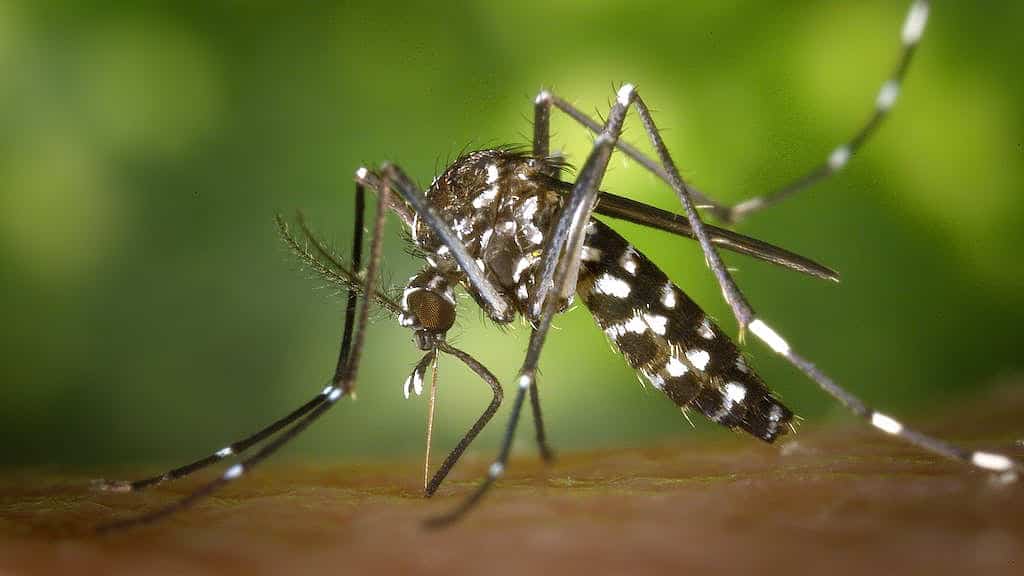Key Takeaways
- Dogs can get infected by brain-eating amoebas, though it is extremely rare.
- The brain-eating amoeba, Naegleria fowleri, primarily affects humans and enters the body through the nose.
- The amoeba resides in warm freshwater environments such as lakes, hot springs, and poorly chlorinated swimming pools.
- There have been only a few reported cases of dogs contracting the infection, and most occurred due to exposure to contaminated water sources.
- It is crucial to prevent dogs from swimming or sniffing areas with warm freshwater that may harbor the amoeba.
- Signs of infection in dogs may include lethargy, loss of appetite, neurological issues, seizures, and a stiff neck.
- If brain-eating amoeba infection is suspected, immediate veterinary attention is required for diagnosis and treatment.
- Preventive measures such as avoiding stagnant water and using proper water treatment methods can help reduce the risk of infection in dogs.
- Although rare, the potential danger of brain-eating amoebas should be taken seriously, and pet owners should be informed and cautious.
Summary
No, dogs cannot get brain eating amoeba. While brain eating amoeba, scientifically known as Naegleria fowleri, can affect humans, there are no documented cases of dogs being infected by this deadly organism. However, it is still important to understand the potential dangers associated with brain eating amoeba and the steps to prevent its transmission. By reading the rest of the article, you can gain a comprehensive understanding of brain eating amoeba, its impact on humans, and the precautions you should take to keep yourself and your furry friends safe.

What is a brain-eating amoeba?
Brain-eating amoebas are single-celled organisms found in warm freshwater environments such as lakes, hot springs, and poorly maintained swimming pools. The amoeba Naegleria fowleri is the most common species known to cause infections in humans and animals. When ingested through the nose or mouth, it can travel to the brain, leading to a rare but severe brain infection called primary amebic meningoencephalitis (PAM). Although humans are the primary victims, it is important to understand if dogs are susceptible to this amoeba as well.
Can dogs get infected by brain-eating amoeba?
While brain-eating amoebas prefer warm freshwater environments, dogs are less likely to be infected compared to humans. The anatomy of a dog’s nasal passages makes it more difficult for the amoeba to reach the brain. Unlike humans who are more prone to inhaling contaminated water through their nose, dogs typically drink water by lapping it up, reducing the chances of infection. Although rare, there have been a few reported cases of dogs contracting brain-eating amoeba, emphasizing the importance of taking precautions.
Symptoms of brain-eating amoeba infection in dogs
The symptoms of brain-eating amoeba infection in dogs are similar to those seen in humans. Some common signs include sudden changes in behavior, neurological abnormalities, loss of coordination, seizures, fever, lack of appetite, and difficulty breathing. If your dog exhibits any of these symptoms, seek immediate veterinary attention. Prompt diagnosis and treatment provide the best chances for recovery.
Prevention and precautions for dog owners
To minimize the risk of brain-eating amoeba infection in dogs, it is suggested to avoid allowing them to drink from freshwater bodies such as lakes or hot springs, particularly in areas where the amoeba is known to be present. Always provide clean, treated water for your pet. Regularly clean and disinfect areas where your dog comes in contact with water, such as food and water bowls, and shower them after swimming. These simple precautions can significantly reduce the chances of amoeba-related infections in dogs.
Treatment options for brain-eating amoeba infection in dogs
If a dog is diagnosed with brain-eating amoeba infection, immediate treatment is crucial. Veterinarians may prescribe antimicrobial drugs and anti-inflammatory medications to combat the infection and reduce brain swelling. However, it is important to note that the prognosis for dogs with this infection is generally poor. The earlier the infection is detected and treatment is initiated, the better the chances of recovery.
Quick Recap
Although rare, brain-eating amoeba infections can occur in dogs. As responsible pet owners, it is essential to take preventive measures to minimize the risk of infection. Be aware of the symptoms and seek veterinary care if you suspect your dog may be infected. By being vigilant and knowledgeable about brain-eating amoebas, we can help protect our beloved furry friends from this uncommon but potentially life-threatening infection.
FAQ: Can dogs get brain-eating amoeba?
1. What are brain-eating amoebas?
Brain-eating amoebas, scientifically known as Naegleria fowleri, are single-celled organisms commonly found in warm freshwater environments such as lakes, hot springs, and soil. These microscopic amoebas can cause a rare and often fatal brain infection called primary amoebic meningoencephalitis (PAM) when they enter the human or animal body through the nose.
2. Can dogs get infected by brain-eating amoebas?
While rare, it is possible for dogs to become infected with brain-eating amoebas such as Naegleria fowleri. Dogs are believed to become infected by swimming in or drinking contaminated warm freshwater sources.
3. How can dogs contract brain-eating amoebas?
Dogs can contract brain-eating amoebas by swimming in or drinking water sources contaminated with Naegleria fowleri. This typically occurs in warm freshwater areas such as lakes, hot springs, or even from inadequately treated swimming pools. It is important to note that infection is rare.
4. What are the symptoms of brain-eating amoeba infection in dogs?
The symptoms of brain-eating amoeba infection in dogs can be similar to other illnesses and may include:
- Loss of appetite
- Lethargy
- Abnormal behavior
- Stiffness or difficulty moving
- Neurological issues
- Seizures
If you notice any of these symptoms in your dog, it is crucial to seek veterinary care immediately.
5. How is brain-eating amoebas infection diagnosed in dogs?
Diagnosing brain-eating amoeba infection in dogs can be challenging since it is a relatively rare occurrence. A veterinarian may use various diagnostic methods, including analyzing cerebrospinal fluid, conducting neurological examinations, and ruling out other possible causes of the symptoms.
6. Can dogs with brain-eating amoeba infection be treated?
Unfortunately, the prognosis for dogs with brain-eating amoeba infection is typically poor. While some treatments have been attempted, they have not shown consistent success. The infection is often detected at an advanced stage, making it challenging to treat effectively.
7. How can I protect my dog from brain-eating amoebas?
To reduce the risk of brain-eating amoeba infection in dogs, it is advisable to:
- Avoid letting your dog swim or drink from warm freshwater sources of unknown water quality.
- Supervise your dog closely while swimming to prevent them from ingesting contaminated water.
- Only use well-maintained swimming pools that are adequately treated with chlorine.
- Keep your dog’s ears dry as much as possible, as the amoeba enters the body through the nose.
8. Is brain-eating amoeba infection contagious from dogs to humans?
No, brain-eating amoeba infection is not contagious from dogs to humans or between animals. Infections occur when the organism enters the body through the nose, typically during water-related activities.
9. Are brain-eating amoebas common in all water sources?
No, brain-eating amoebas are relatively rare in most water sources. They tend to thrive in warm freshwater environments, especially during hot summer months. Cool and properly treated water sources are generally less likely to harbor these amoebas.
10. Is there a vaccine to prevent brain-eating amo
Conclusion
In conclusion, dogs can indeed be infected with the brain-eating amoeba, Naegleria fowleri. While this amoeba is most commonly found in warm freshwaters, cases of infection in dogs have been reported. The parasite can enter a dog’s body through the nasal passages, making it particularly susceptible during activities such as swimming in contaminated lakes or ponds. Once inside, the amoeba can cause a rare but often fatal brain infection called primary amoebic meningoencephalitis. However, it is important to note that such cases are extremely rare, and the majority of dogs remain unaffected. As a responsible dog owner, it is crucial to be aware of the risks, take preventive measures, and seek immediate veterinary attention if any symptoms of infection appear.
📚 Sources:










